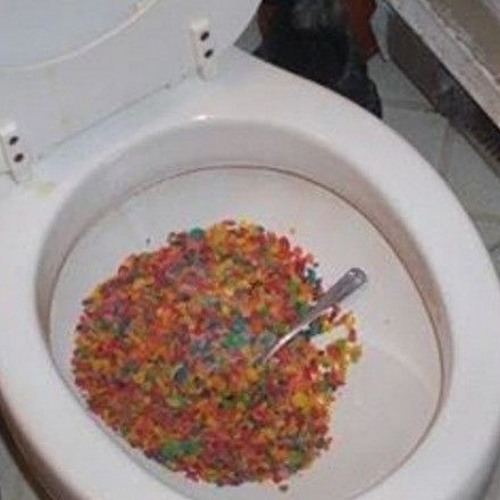Is it Common to Flush Food in the Toilet?
Is it Common to Flush Food in the Toilet?
Blog Article
Are you currently looking for insight on Is it safe to flush food (especially rice) down the toilet??

Introduction
Many individuals are frequently confronted with the problem of what to do with food waste, specifically when it concerns leftovers or scraps. One usual question that emerges is whether it's alright to flush food down the toilet. In this post, we'll explore the reasons why individuals could think about purging food, the consequences of doing so, and different techniques for proper disposal.
Reasons individuals may consider flushing food
Absence of awareness
Some individuals may not know the potential harm caused by flushing food down the toilet. They may wrongly believe that it's a harmless method.
Convenience
Purging food down the toilet may look like a quick and very easy remedy to getting rid of unwanted scraps, specifically when there's no close-by garbage can offered.
Laziness
In many cases, people may just choose to flush food out of sheer idleness, without taking into consideration the effects of their activities.
Effects of flushing food down the commode
Environmental influence
Food waste that ends up in rivers can add to pollution and injury marine ecological communities. Additionally, the water utilized to purge food can stress water sources.
Pipes concerns
Purging food can cause blocked pipes and drains pipes, causing expensive plumbing repair work and troubles.
Sorts of food that need to not be flushed
Coarse foods
Foods with fibrous textures such as celery or corn husks can obtain tangled in pipes and trigger clogs.
Starchy foods
Starchy foods like pasta and rice can soak up water and swell, resulting in blockages in pipes.
Oils and fats
Greasy foods like bacon or cooking oils must never be flushed down the commode as they can solidify and cause clogs.
Correct disposal approaches for food waste
Utilizing a garbage disposal
For homes outfitted with waste disposal unit, food scraps can be ground up and purged through the pipes system. Nonetheless, not all foods appropriate for disposal in this fashion.
Recycling
Specific food product packaging materials can be recycled, minimizing waste and reducing environmental impact.
Composting
Composting is an eco-friendly method to deal with food waste. Organic materials can be composted and used to improve soil for horticulture.
The importance of correct waste administration
Decreasing environmental injury
Appropriate waste monitoring methods, such as composting and recycling, aid lessen pollution and protect natural resources for future generations.
Protecting pipes systems
By avoiding the practice of flushing food down the toilet, homeowners can protect against costly plumbing repair services and keep the integrity of their plumbing systems.
Conclusion
In conclusion, while it may be tempting to purge food down the commode for convenience, it is very important to comprehend the prospective repercussions of this activity. By embracing proper waste management techniques and taking care of food waste sensibly, individuals can add to healthier plumbing systems and a cleaner setting for all.
FLUSH FOOD DOWN THE TOILET?
FLUSHING FOOD CAN CAUSE BLOCKED DRAINS IN YOUR HOME
All of the plumbing fixtures in your home are connected to the same sewer pipe outside of your home. This outdoor sewer pipe is responsible for transporting all the wastewater from your home to the Council sewer mains. Even small pieces of food that go down the kitchen sink can cause problems for your sewer. It should therefore be obvious that flushing larger bits of food, such as meat, risks a clog in either the toilet itself or the sewer pipes. Flushing greasy food is even more problematic because oil coagulates when it cools, coating the interior lining of your pipes.
THE TOILET IS NOT A BIN
Food isn’t the only thing that people shouldn’t be flushing down the toilet. People use the toilet to dispose of all kinds of things such as tampons, makeup wipes, dental floss, kitty litter and even underwear. Water goes to great lengths to educate residents about the high costs and stress placed on wastewater treatment systems simply from people flushing the wrong stuff down the toilet. It costs taxpayers millions of dollars each year, and homeowners thousands in blocked drain repairs.
FLUSHING FOOD IS A WASTE OF WATER
Flushing food is a waste of our most precious resource - water. In June this year Level 1 water restrictions were introduced to protect water supply from drought conditions. Much of New South Wales continues to be affected by prolonged drought with recent figures revealing up to 97 per cent of the state remains in drought. Depending on whether you have a single or dual flush toilet, every single flush uses between five and 11 litres of water. In the current climate this is a huge amount of water to be wasting on flushing food that should be placed in the bin (or better yet, the compost).
https://www.jabplumbingsolutions.com.au/blog/can-you-flush-food-down-the-toilet

Do you like reading about What Can Happen If You Flush Food Down the Toilet?? Try to leave a comment below. We will be glad to see your reactions about this review. We hope that you visit us again soon. Are you aware of another person who is very much interested in the topic? Feel free to share it. Thank you so much for your time spent reading it.
Request Service Report this page